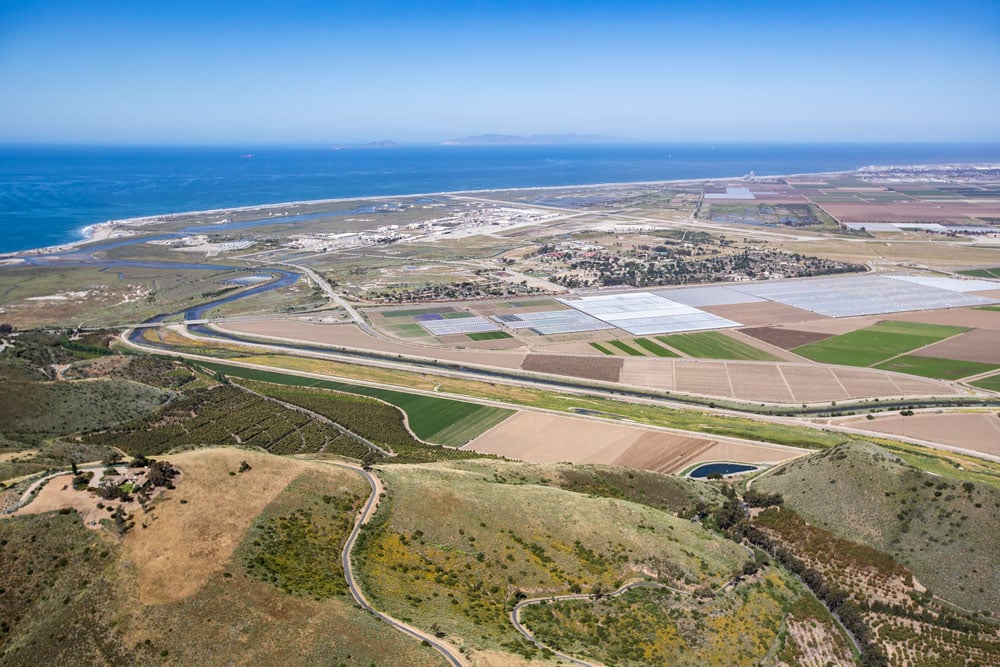A look at the J-Tech II operations at the Point Mugu Sea Range
On the Pacific coast of Southern California lies 36,000 square miles of sea space known as the Point Mugu Sea Range (PMSR). Established in 1946, PMSR is the Department of Defense’s largest and most instrumented over water test range—a range used primarily to test and evaluate naval weapons systems in a realistic, yet controlled, open-ocean and littoral (near-shore or shallow water) operating environment. PMSR is a part of Naval Base Ventura County (NBVC), a premier naval installation home to JT4’s primary Navy customer, the Naval Air Warfare Center Weapons Division (NAWCWD). JT4 is one of the main contractors for NAWCWD’s operations at the China Lake Ranges and PMSR, collectively known at JT4 as Annex 4. With the help of our teammate companies, JT4 plays a crucial role in the research, development and testing of missiles, free-fall weapons and electronic warfare systems for America’s fleet.
PMSR is the cornerstone of national naval test support. In addition to sea space, the range is equipped with corresponding airspace that can be expanded, if necessary, through coordination with the Federal Aviation Administration (FAA). Members of the JT4 team assist in PMSR’s mission by providing many levels of expertise, including support for surveillance radars, tracking radars, telemetry and even photography, capturing the data and images needed to evaluate weapons systems prior to deployment. The sea range often works with other Department of Defense and commercial organizations across the country like the Missile Defense Agency and Vandenberg Space Force Base for research, development and testing of systems and equipment. For example, our employees have provided photography support for SpaceX launches in Florida. From setting up operational control rooms for customers and programmers to rigging destroyers/cruisers with transponders, our employees provide a broad range of support to PMSR.
PMSR operations also include a couple of the Channel Islands located off the shore of Southern California. Santa Cruz Island (SCI) and San Nicolas Island (SNI), which once served as early warning outposts for observing enemy planes and ships during World War II, are both continuously manned for missions. JT4 exclusively maintains communication equipment on SCI, as well as generators, roads and landing docks for incoming supply barges. On SNI, members of the JT4 team are responsible for many island facilities, including radar tracking instrumentation, electro-optical devices, telemetry, communications equipment, missile/target launch areas and other personnel support. SNI is located 65 miles south of NBVC and maintains a 10,000-foot concrete and asphalt runway that can accommodate an aircraft the size of a C-5. The island’s mission has two main functions, serving as a launch platform for short and medium missile testing and as an observation facility for missile testing. JT4’s primary mission at SNI is to support the research, design, development, test and evaluation of air weapons and associated aircraft systems into a strike, anti-surface and anti-air warfare aircraft within the sea test range.
A critical national defense asset, PMSR is continually evolving to meet the changing needs of the U.S. Navy. One area where PMSR is expanding, in the near future, is with its Electronic Warfare (EW) capabilities needed to provide representative near-shore, littoral and open water environments to test military systems against EW threats, as well as to train crews against representative EW threats. Eventually, the newly established EW capability will have the ability to be structured to simulate early warning radar, shipboard anti-aircraft artillery and missile fire control radar, as well as land-based anti-aircraft artillery and missile fire control radar. Upon completion, PMSR shall be capable of providing customers with threat simulators, operations and range control, instrumentation, time-space-position information, telemetry, optical and communications, data processing and display systems, signal monitoring and calibration of systems.
No matter what level of support it provides, PMSR’s success is dependent upon range safety. In fact, PMSR is uniquely situated as the only instrumented sea range in the U.S. capable of handling safe test and training of expanded weapons systems. With its proximity to seaports and beaches, commercial and recreational vehicles can jeopardize test objectives at any moment. PMSR’s range safety team keeps a tight control of the test area and is able to shut down operations at a moment’s notice if unsafe conditions arise that may put range personnel or civilians at risk. Other considerations include the environmental impact of sea testing. Tests tend to be captive carry (weapon is not released) or involve the release of non-explosive or telemetry-only warheads. In the event that an unauthorized entity enters the test space, a flight termination system (FTS) is in place that can terminate the test mid-launch. In this way, the highly controlled conditions at PMSR make it the ideal place to test Navy systems and related equipment prior to deployment in the real-world. When simulations are inadequate, PMSR provides the perfect maritime environment for live testing and training of naval technologies and personnel to keep our warfighters in the best position to defend our nation and its interests. ////


